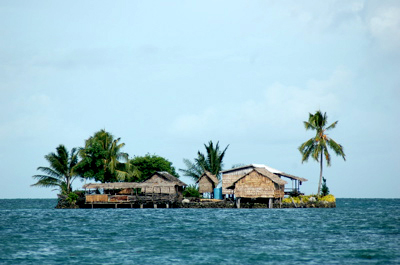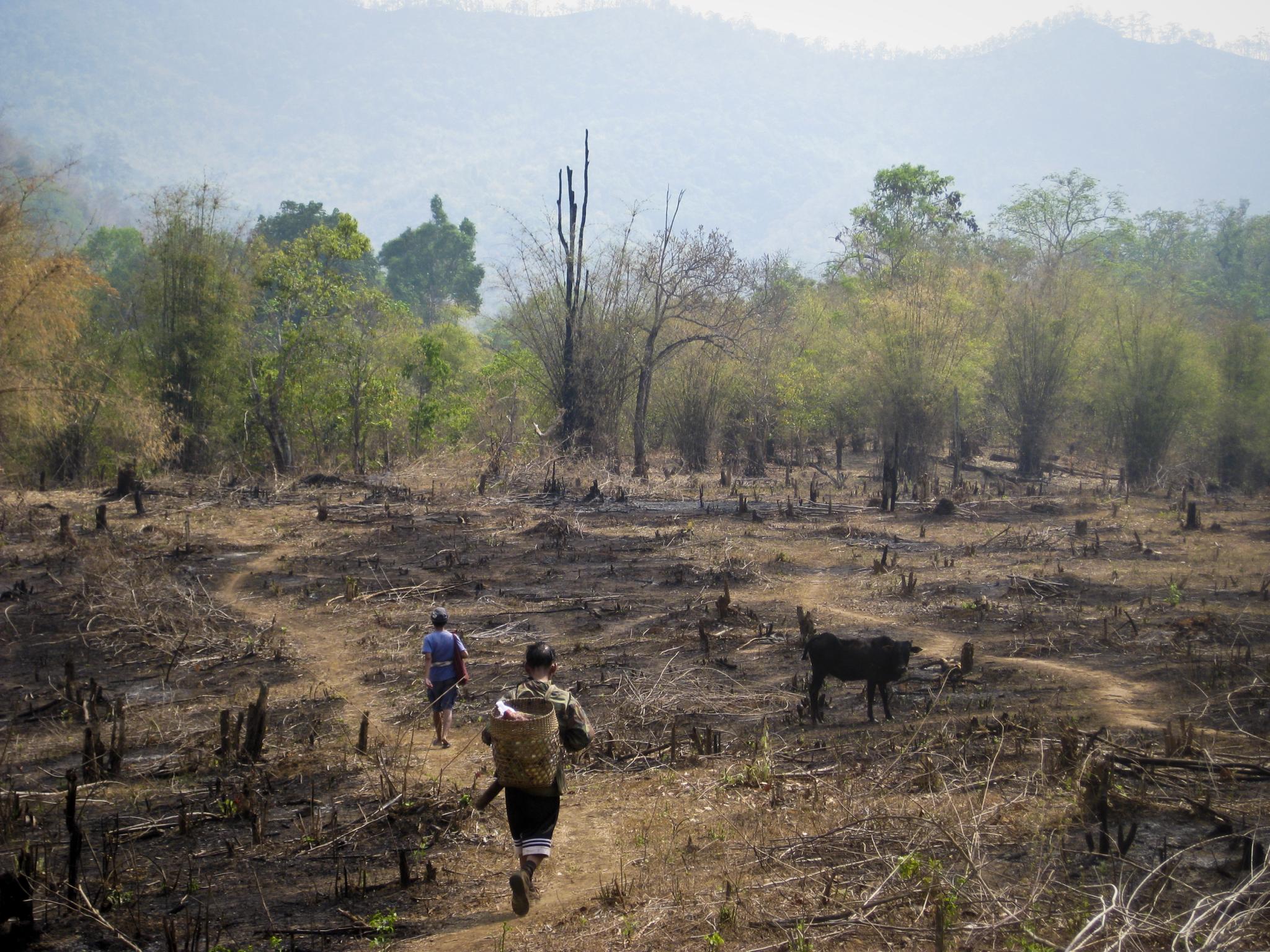|
Kwaio
Kwaio is an ethnic group found in central Malaita, in the Solomon Islands. According to Ethnologue, they numbered 13,249 in 1999. Much of what is known about the Kwaio is due to the work of the anthropologist Roger M. Keesing, who lived among them starting in the 1960s. Their main mode of economic activity was traditionally subsistence farming of taro, which could be planted and harvested continuously in swidden agriculture. Other important crops include Yam (vegetable), yams and Plantain (cooking), plantains. Birds, insects, fish, and phalanger, cuscus were occasional additions to what was mainly a vegetarian diet. Taro production suffered in a severe blight in the 1950s, and has been replaced by the sweet potato, a food of much lower prestige. Kwaio settlement was traditionally in very small settlements dotted close together. Missionary activity, predominantly in coastal areas, has encouraged the growth of larger settlements. According to oral tradition, the land was first clea ... [...More Info...] [...Related Items...] OR: [Wikipedia] [Google] [Baidu] |
Malaita Massacre
The Malaita massacre inflicted a large number of deaths on the island of Malaita in the Solomon Islands in late 1927. William R. Bell, the District Officer of Malaita in the British Solomon Islands Protectorate, and many of his deputies were killed by Basiana and other Kwaio people, Kwaio warriors as part of a plan to resist the tax per head, head tax imposed by the colonial authorities and what was perceived as an assault on the traditional values. A retributive raid was organised that ultimately resulted in the death of about 60 Kwaio, in addition to nearly 200 incarcerated and a systematic destruction and desecration of important Kwaio ancestral shrines and ritual objects. The event was of extreme significance for the Kwaio people, and has greatly affected their way of life. Tax collection massacre In September 1927, various Kwaio, led by Basiana, planned an attack on Bell and his party when they came for the tax collection. They attempted to recruit plotters by advancing th ... [...More Info...] [...Related Items...] OR: [Wikipedia] [Google] [Baidu] |
Kwaio Language
The Kwaio language, or Koio, is spoken in the centre of Malaita Island in the Solomon Islands. It is spoken by about 13,000 people. Phonology The phonology of the Kwaio language includes 5 vowels and 18 consonants (including the glottal stop), which are shown below. The labialised velars (gw, kw, and ŋw) only occur when preceding vowels . Sounds may be heard as fricatives in the Sinalagu dialect. The phoneme is pronounced when preceding low vowels but when preceding high vowels . This distinction is shown in the orthography. For example, , , are pronounced with , but and are pronounced with . Voiced sounds are prenasalized ��b, ⁿd, ᵑɡ, ᵑɡʷmainly in intervocalic position. Syllables In the Kwaio language the bases are usually formed using stings of CVCV, but CVV, VCV, and VV appear because the consonants are sometimes dropped. There are no consonant clusters (CC), and all syllables are open, so they end in a vowel. Stress When the same vowel appears ... [...More Info...] [...Related Items...] OR: [Wikipedia] [Google] [Baidu] |
Kwaio People
Kwaio is an ethnic group found in central Malaita, in the Solomon Islands. According to Ethnologue, they numbered 13,249 in 1999. Much of what is known about the Kwaio is due to the work of the anthropologist Roger M. Keesing, who lived among them starting in the 1960s. Their main mode of economic activity was traditionally subsistence farming of taro, which could be planted and harvested continuously in swidden agriculture. Other important crops include yams and plantains. Birds, insects, fish, and cuscus were occasional additions to what was mainly a vegetarian diet. Taro production suffered in a severe blight in the 1950s, and has been replaced by the sweet potato, a food of much lower prestige. Kwaio settlement was traditionally in very small settlements dotted close together. Missionary activity, predominantly in coastal areas, has encouraged the growth of larger settlements. According to oral tradition, the land was first cleared 1200 to 2000 years ago. The tracts cle ... [...More Info...] [...Related Items...] OR: [Wikipedia] [Google] [Baidu] |
Malaita
Malaita is the primary island of Malaita Province in Solomon Islands. Malaita is the most populous island of the Solomon Islands, with a population of 161,832 as of 2021, or more than a third of the entire national population. It is also the second largest island in the country by area, after Guadalcanal. The largest city and provincial capital is Auki, on the northwest coast and is on the northern shore of the Langa Langa Lagoon. The people of the Langa Langa Lagoon and the Lau Lagoon on the northeast coast of Malaita call themselves ''wane i asi'' ‘salt-water people’ as distinct from ''wane i tolo'' ‘bush people’ who live in the interior of the island. South Malaita Island, also known as ''Small Malaita'' and ''Maramasike'' for ꞋAreꞌare language, ꞋAreꞌare speakers and Malamweimwei known to more than 80% of the islanders, is the island at the southern tip of the larger island of Malaita. Name Most local names for the island are Mala, or its dialect variants ... [...More Info...] [...Related Items...] OR: [Wikipedia] [Google] [Baidu] |
La'aka
La'aka is a powerful ancestress and one of the most widely propitiated of spirits among the eastern Kwaio on Malaita, Solomon Islands. She is seen as both a protective figure who exemplifies maternal virtues and the productive powers of women and as a warrior whose deeds rivalled those of the ancient Kwaio strongmen who, as ancestral spirits ( adalo), are propitiated and confer power to the living. She is one of the great ancestors of about twelve to twenty generations ago, which do not represent the starting point of the deepest genealogies, but represent those believed to have founded the modern Kwaio way of life. In 1939 a priest above Uru named Noto'i received messages from La'aka that she had visited America and spoken with the American King, and announced that American warships would come and kill all British colonial officials. On the basis of these pronouncements, many Kwaio built houses to accommodate the American visitors. Messages from La'aka were spoken in tongues, t ... [...More Info...] [...Related Items...] OR: [Wikipedia] [Google] [Baidu] |
South Seas Evangelical Church
The South Sea Evangelical Church (SSEC) is an evangelical, Pentecostal church in Solomon Islands. In total, 17% of the population of Solomon Islands adheres to the church, making it the third most common religious affiliation in the country behind the Anglican Church of Melanesia and the Roman Catholic Church. The SSEC is particularly popular on Malaita, the most populous island, where 47% of its members live; there are also smaller populations in Honiara and elsewhere on Guadalcanal, on Makira, and in other provinces. History The organisation was founded in 1886 as the "Queensland Kanaka Mission" (QKM) in Queensland, Australia, as an evangelical and non-denominational church targeting Kanakas ( blackbirded labourers at the sugarcane plantations, mostly from Solomon Islands and Vanuatu). Florence Young, the sister of Arthur, Horace and Ernest Young, the owners of the Fairymead plantation on which the mission was located, was largely responsible for the establishment of the mission ... [...More Info...] [...Related Items...] OR: [Wikipedia] [Google] [Baidu] |
Solomon Islands
Solomon Islands, also known simply as the Solomons,John Prados, ''Islands of Destiny'', Dutton Caliber, 2012, p,20 and passim is an island country consisting of six major islands and over 1000 smaller islands in Melanesia, part of Oceania, to the northeast of Australia. It is directly adjacent to Autonomous Region of Bougainville, Bougainville, a part of Papua New Guinea to the west, Australia to the southwest, New Caledonia and Vanuatu to the southeast, Fiji, Wallis and Futuna, and Tuvalu to the east, and Nauru and the Federated States of Micronesia to the north. It has a total area of 28,896 square kilometres (11,157 sq mi), and a population of 734,887 according to the official estimates for mid-2023. Its capital and largest city, Honiara, is located on the largest island, Guadalcanal. The country takes its name from the wider area of the Solomon Islands (archipelago), Solomon Islands archipelago, which is a collection of Melanesian islands that also includes the Autonomous ... [...More Info...] [...Related Items...] OR: [Wikipedia] [Google] [Baidu] |
Swidden Agriculture
Slash-and-burn agriculture is a form of shifting cultivation that involves the cutting and burning of plants in a forest or woodland to create a field called a swidden. The method begins by cutting down the trees and woody plants in an area. The downed vegetation, or "slash", is then left to dry, usually right before the rainiest part of the year. Then, the biomass is burned, resulting in a nutrient-rich layer of ash which makes the soil fertile, as well as temporarily eliminating weed and pest species. After about three to five years, the plot's productivity decreases due to depletion of nutrients along with weed and pest invasion, causing the farmers to abandon the field and move to a new area. The time it takes for a swidden to recover depends on the location and can be as little as five years to more than twenty years, after which the plot can be slashed and burned again, repeating the cycle. In Bangladesh and India, the practice is known as jhum or jhoom. Slash-and-burn is ... [...More Info...] [...Related Items...] OR: [Wikipedia] [Google] [Baidu] |
Fiji
Fiji, officially the Republic of Fiji, is an island country in Melanesia, part of Oceania in the South Pacific Ocean. It lies about north-northeast of New Zealand. Fiji consists of an archipelago of more than 330 islands—of which about 110 are permanently inhabited—and more than 500 islets, amounting to a total land area of about . The most outlying island group is Ono-i-Lau. About 87% of the total population live on the two major islands, Viti Levu and Vanua Levu. About three-quarters of Fijians live on Viti Levu's coasts, either in the capital city of Suva, or in smaller urban centres such as Nadi (where tourism is the major local industry) or Lautoka (where the Sugarcane, sugar-cane industry is dominant). The interior of Viti Levu is sparsely inhabited because of its terrain. The majority of Fiji's islands were formed by Volcano, volcanic activity starting around 150 million years ago. Some geothermal activity still occurs today on the islands of Vanua Levu and ... [...More Info...] [...Related Items...] OR: [Wikipedia] [Google] [Baidu] |
Taro Leaf Blight
Hosts and symptoms First described in Java by Marian Raciborski in 1900, taro leaf blight is caused by the oomycete ''Phytophthora colocasiae'', which infects primarily ''Colocasia'' spp. and ''Alocasia macrorrhizos''.Singh, D., Jackson, G., Hunter, D., Fullerton, R., Lebot, V., Taylor, M., Iosefa, T., Okpul, T., and Tyson, J. July 2012. Taro leaf blight - a threat to food security. Agriculture. 2, 182 - 203. ''P. colocasiae'' primarily infects leaves, but can also infect petioles and corms.Nelson, S., Brooks, F., and Teves, G. July 2011. Taro leaf blight in Hawaii. College of tropical agricultural and human resources. Symptoms on leaves initially occur where water droplets accumulate and eventually form small, brown spots surrounded by halos on the upper surface of leaves. These spots expand very quickly and form large brown lesions. The entire leaf can be destroyed within a few days of the initial appearance of symptoms under wet conditions.Misra, R.S, Sharma, K., and Mishra, ... [...More Info...] [...Related Items...] OR: [Wikipedia] [Google] [Baidu] |




